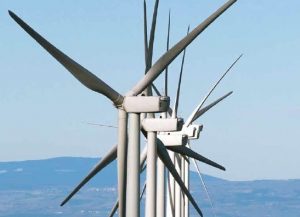A coalition of groups representing a broad spectrum of U.S. manufacturing, construction, energy, and environmental workers, are calling for Congress to include electric transmission provisions in any proposed infrastructure legislation and streamline expansion of U.S. electrical infrastructure.
A co-signed letter by the American Wind Energy Association (AWEA), the National Electrical Manufacturers Association (NEMA), the Solar Energy Industries Association (SEIA), WIRES, and other groups, was sent to Senate Majority Leader Mitch McConnell of Kentucky, Senate Minority Leader Chuck Schumer of New York, Speaker of the House Paul Ryan of Wisconsin and House Minority Leader Nancy Pelosi of California. In the letter, coalition members urged Congress to promote grid investments that lessen the economic impact of electrical outages and ensure the country’s high-voltage transmission system is productive and secure.
“Just like highways and bridges, transmission is infrastructure that keeps the U.S. economy moving — and growing,” said Tom Kiernan, CEO of AWEA. “Investment in new transmission lines will modernize the U.S. grid and deliver more clean energy to population centers. This investment also will help to keep the lights on and costs low for American homeowners and businesses. Recognizing transmission as essential infrastructure is another way Congress and the administration can keep promises of advancing all forms of energy while growing U.S. energy independence.”
“Modernizing, expanding, and protecting the electric grid is a national priority,” said NEMA President and CEO Kevin Cosgriff. “Upgrading and extending the more than 200,000 miles of high-voltage transmission lines in the United States is necessary in its own right to ensure that low-cost and reliable electricity continues to flow to the nation’s businesses, hospitals, schools, and homes. But importantly, it also supports high-quality construction and manufacturing jobs. Unlike other infrastructure projects, the primary obstacle facing electrical infrastructure tends not to be a lack of federal funding. Rather, labyrinthine transmission siting and permitting processes are major barriers slowing grid investments.”
“Modern electricity infrastructure is the missing piece of the puzzle that will allow the greater use of clean, abundant sources of energy in communities across America,” said SEIA’s President and CEO Abigail Ross Hopper. “We’ve seen lower cost clean energy expand dramatically in parts of the country with modern infrastructure, and that is a trend that will only continue with supportive and sensible policy.”
“A robust and highly integrated transmission grid is the gateway to the intensely electrified North American economy of the 21st Century,” said Jim Hoecker, counsel to WIRES and former chairman of FERC. “Along the way, it will yield over 150,000 jobs each year and save consumer nearly $50 billion annually. However, all that depends on rationalizing a regulation regime that typically holds projects hostage for a decade and penalizes innovation.”
Transmission infrastructure consists of the steel poles and wires that deliver electricity across large distances to areas where it’s needed, like cities and heavy manufacturing facilities. A strong grid is essential for a free market in electricity as new power lines help diversify the grid. New transmission also creates jobs and rural economic development at one end of the line while delivering lower electricity prices at the other.
Source: AWEA
For more information, go to www.awea.org

























